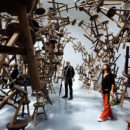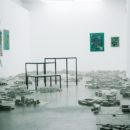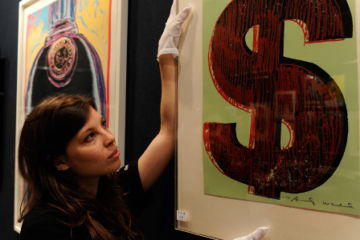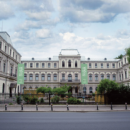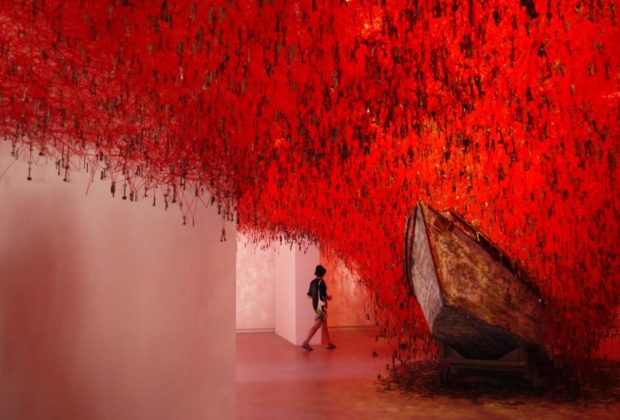
Purchasing contemporary art – emotional decision or financial investment?
Since Duchamp`s revolutionary moment, each of us has become an active party, involved to complete an artwork: the artist provides a clue, but the rest is up to the way we interpret and understand. And, if the “conversation” topic is interesting, why not taking it up in our personal space…?
Just like for any other important asset, the purchase of an artwork must be done wholeheartedly, when we really fall in love with it. Like the way in which we chose the place we call ‘home’: we see tens of houses, all of them looking alike, but in the end only one seduces us, for a series of reasons that are most of the time difficult to explain. When we discuss about collecting art, in fact we think about the personality and the profile of the collector, his passions and the close connection which should be born between the human being and the creation. Although art is considered an investment first of all, regardless of its value, the choice must be emotional above everything else.
All art lovers dream of having a unique and very original artwork. In order to accomplish this goal, we combine two aspects: the capacity to break through and understand the current artistic language and the costs. The budget that we desire to allocate is one of the first things we must define, so we can know from the beginning what we can afford to buy.
The first step forward is the process of getting information and education. The explosion of artists, styles and artistic creations at international level is truly amazing, and this makes the task even more difficult. Despite the fact that the purpose of art is to embellish and to setup a communication relationship with the admirer, it is also true that the act of collecting objects is very “fashionable”, elitist and in good taste. Going beyond the frivolous appreciations, a person who is truly in love with contemporary art builds up his options and collection based on esthetic and personal reasons – because he feels that the artwork conveys certain ideas and messages, because he is a fan of a certain artist or simply because he feels the latent force of a creator who will attain more value in time.
Unlike classical art, which had passed the test of time and its value was certified by history, investing in contemporary art has a surprise element because contemporary artists / works are going through a great process of emergence or not. In this case, emotional involvement and intuition play an essential role in selecting and deciding the purchase of contemporary artworks, together with quantifiable solid portfolio and artistic personality.
Who may advise us?
John Pierpont Morgan is a financial consultant and also a collector. He is saying that regardless of the object we collect, we should stop after purchasing the best 100 pieces. This is a challenge which indicates the difficulty of making choices and the need to be passionate about this, to study and to make a tough selection. The undertaking of the choice is not simple and must be guided by a professional individual.
Those who are getting close to the modern and contemporary art market for the first time are often facing a sort of confusion. In fact, many contemporary art segments need a certain level of competency in order to permeate the significance. People are often charmed by the beauty of the window display of art galleries and the extraordinary paintings but they don`t have the courage to go in because they seem inaccessible. The art market of the last twenty years changed a lot and together with it the gallerist job changed as well. The gallerist is the first individual with whom the buyer gets into contact. Often, this is a skilled person who masters the market better than art history. His commercial sense and the personal taste of the collector are converging towards a decision that ideally speaking must meet both demands – esthetics and material – so that contemporary art buyers are perfectly informed in making their choices.
The role of a specialized advisor is extremely important, because, besides the permanent information and communication with the collector, he is the first one to find out the market trends, the time when new works appear in the gallery circuit and what`s going on with the artist; he informs us on the route of certain works, the arrival and the preview display of the new ones; he does market research and finds whatever he is requested. Due to the profile of his job, the main activity is to promote, display and sell art, while the artist spends his time in the workshop preserving and directing his entire energy towards the results of his creation. Practically speaking, the gallerist is the middle man between the artist and the collector, thus establishing a complementarity relationship: the artist brings his talent; the gallerist puts in all his experience and science with the objective of selling and finding the most adequate place for each work. Moreover, he must have a vision, intuition and the ability to discover new talents; he even has to have the qualities of a mediator, curator, manager, expert, communication and marketing specialist.
The advice of a good specialist shall always be to buy whatever fits the personality, taste and particular space of each collector and not to focus too much on the financial profitability.
——————————————————————————————————————————–
Continue reading in The Art of Living no. 16, an issue dedicated to contemporary art. DOWNLOAD


